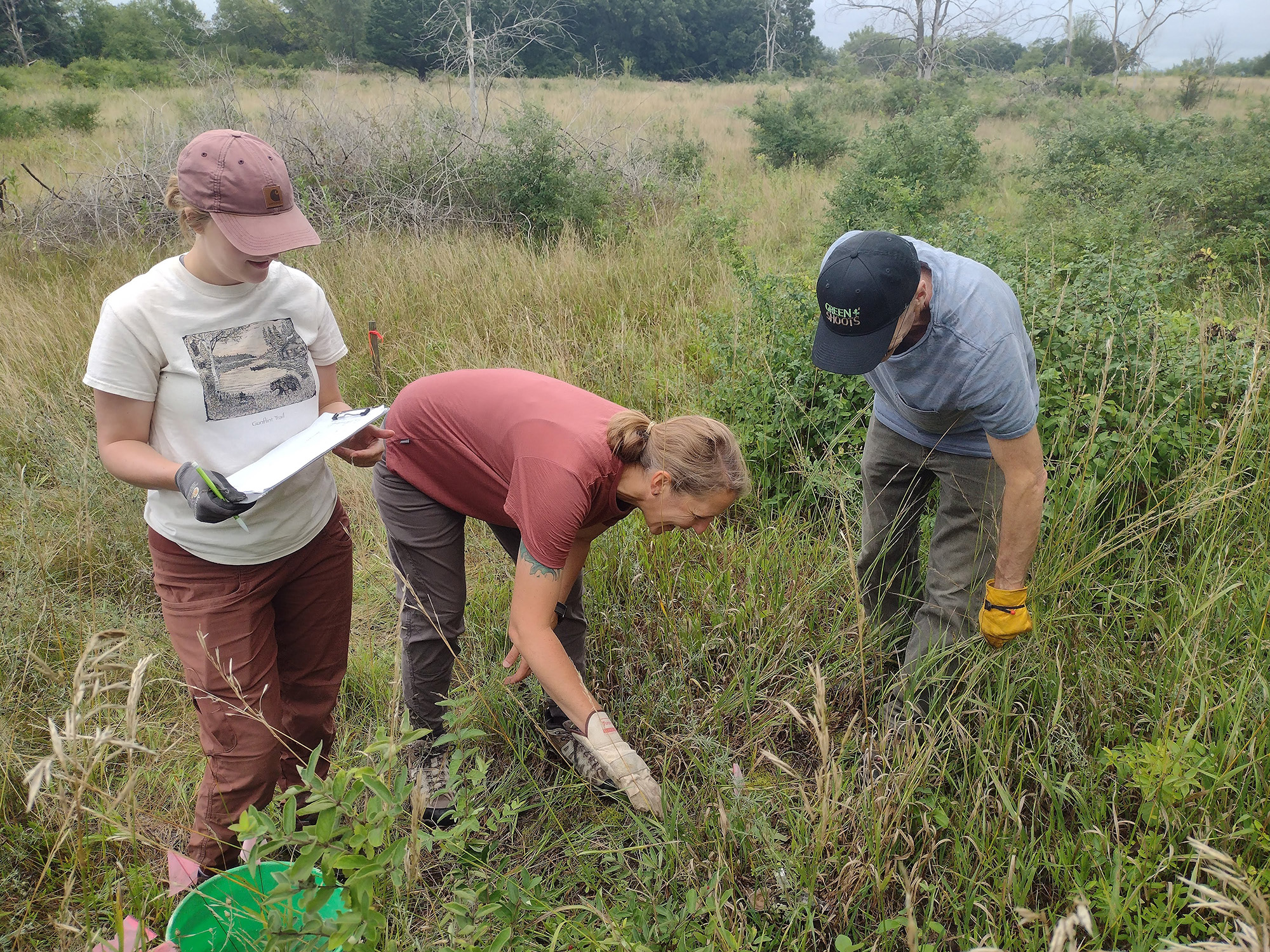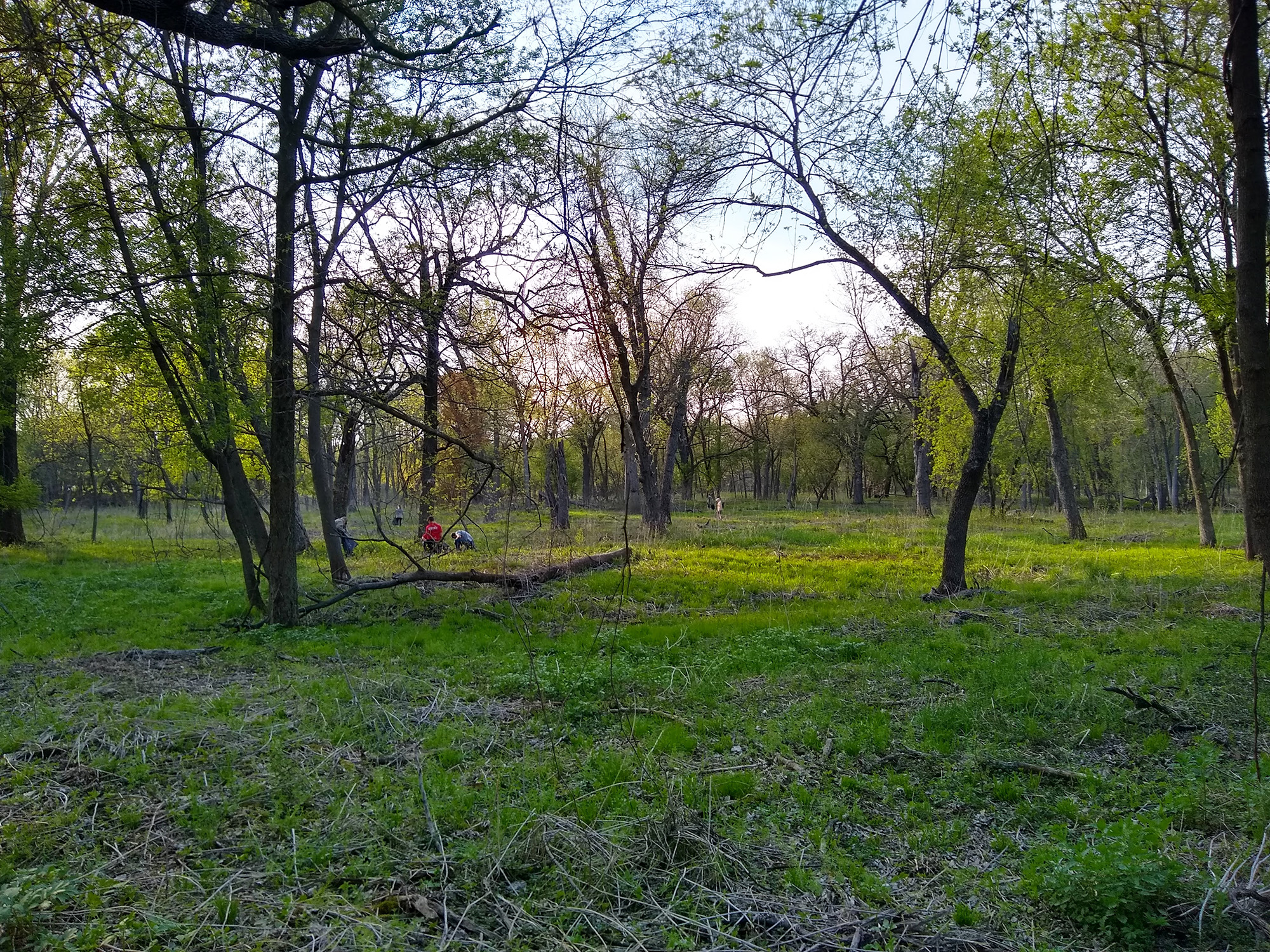More hope for long-term buckthorn control

FMR actively tracks the success of invasive plant removal and native plant establishment. Here, FMR ecologists and interns monitor invasive honeysuckle removal plots.
New research shows that seeding and planting after buckthorn removal can help keep future buckthorn growth at bay. But not all plantings are created equal.
As we've previously written, invasive plants like buckthorn can harm water quality, native plants, wildlife and recreation. Left unchecked, buckthorn can outcompete native plant species, which pushes out the insects, birds and other wildlife that depend on those native plants.
By removing buckthorn at a site, we can start to heal ecosystems, creating vital habitat and cleaner water. But there's more to restoration than just removing invasive species.
Buckthorn has often been present at a site long enough that it has outcompeted remaining native plants and exhausted any remaining native seedbank. While we occasionally experience flushes of native plant growth after buckthorn removal, it's important to follow removal with native seeding and planting to help native plants reestablish and thrive.
More and more, we're learning that those plants not only provide habitat and water quality benefits, but actually help keep buckthorn from reestablishing its hold as well. We wrote about this in 2020, explaining the results of a journal article co-authored by FMR Conservation Director Dr. Alex Roth that used FMR restoration sites in its experiments.
New findings incoming!
A new paper from the same co-authors, published in the journal Ecological Engineering, builds upon that previous work to test how various seeding and planting regimes affect future buckthorn success.
Researchers compared plots seeded with 35 native grasses and wildflowers, or planted with Pennsylvania sedge (Carex pensylvanica) plugs, bare-root plantings of mixed shrubs, or seedlings of two tree species.
The key to suppressing buckthorn was in these species' ability to limit light availability at the ground level, which limits buckthorn germination, growth and survival. By negatively influencing those three factors, treatments were able to negatively affect buckthorn reestablishment. Seeding alone suppressed buckthorn by 51% — a huge margin — and results only increased from there. Planted sedges suppressed buckthorn by 68%, while shrubs (81%) and trees (89%) performed even better.

After buckthorn removal, seeded plants begin to flourish at the William H. Houlton Conservation Area. This area was included in recent research on revegetation to control buckthorn spread.
A step in the right direction for buckthorn management
These results demonstrate a proof-of-concept: When we're able to restore diverse or dense native plant cover, we can help compete with and suppress future buckthorn reestablishment by limiting its ability to germinate, grow and survive.
"The next steps will be to figure out how to scale these results for statewide restoration, and to make sure that we can do so in a way that is affordable and implementable on a large scale," Alex adds. "For now, every site is different, and landowners and land managers need to decide which of these treatments can work for them."
We're not done yet
These results add to FMR's growing body of work on restoration research. Our Land Conservation team participates in a variety of research projects, all aimed at improving the field of restoration ecology. From topics like encouraging prairie pollinator diversity to minimizing herbicide use, our staff is always busy making sure that the work we're doing can have the greatest possible positive impact on our ecological systems.